![]() How many sports out there are as dangerous and yet as aesthetically pleasing as surfing? The riding of a wave requires those taking on the challenge to take on one of nature’s most potent things: water. Get it wrong and surfers face a genuine risk of drowning, but get it right and the sight of someone standing up on a board as the water carries them towards the shore can be thrilling to watch.
How many sports out there are as dangerous and yet as aesthetically pleasing as surfing? The riding of a wave requires those taking on the challenge to take on one of nature’s most potent things: water. Get it wrong and surfers face a genuine risk of drowning, but get it right and the sight of someone standing up on a board as the water carries them towards the shore can be thrilling to watch.
Riding a wave is the sort of thing that most of us have tried to do to some extent, letting the tide take us in to the beach when we’re on holiday. That’s nothing compared to the sort of thing that competitive surfers need to do, though, having to find the perfect wave before using it to carry them forward whilst they stand on their board.
An essential part of ancient Polynesian culture, surfing has been around for hundreds of years but the type of thing that your average person might do from Cornwall to Hawaii doesn’t necessarily bear much in common with competitive surfing. Professional surfing isn’t just about catching the wave on your board and having it carry you towards the beach, instead having its own rules and regulations that mean competitors can go head-to-head in contests all around the world. The rulebook is written and updated by the World Surf League, ruling the roost on heats and declaring how scores work. It can be a complicated business, but when you know what you’re watching it’s no less thrilling than any other sport.
Best Place To Bet On Surfing
Unibet

To bet on surfing you either need to go with a very niche site or with one of the big powerhouses. The best of the big boys is Unibet, as they tend to have a wider perspective beyond traditional sports.
Unibet provide ante-post prices for the major world events before other bookmakers with generally good value. They are also one of the best for depth once events go live.
Other good options include any of the larger betting sites, who have enough traders to price surfing markets.
How To Bet On Surfing
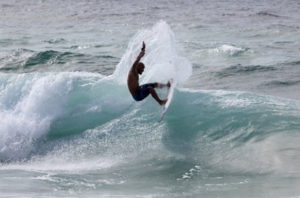 As you might imagine from reading this piece and the history of surfing, betting on it isn’t quite like any other sport. It’s a sport that doesn’t have the same sort of judging criteria as other sports. It lacks the binary nature of football, for example, with goals being a clear way of telling with that sport whether one team has won compared to another.
As you might imagine from reading this piece and the history of surfing, betting on it isn’t quite like any other sport. It’s a sport that doesn’t have the same sort of judging criteria as other sports. It lacks the binary nature of football, for example, with goals being a clear way of telling with that sport whether one team has won compared to another.
It perhaps has more in common with a sport like boxing, where judges make a decision on the performance of the participants and controversy is not uncommon. The result of that is that it’s tricker to come up with bets on surfing than it is on more mainstream sports and this is reflected in the markets available to punters with most bookmakers.
Some bookmakers out there can specialise in sports, of course, so you might be able to find one that offers you more markets than the norm. The common bets are as follows:
- Winner bets on the outright winner of a competition or a leg of a competition
- Accumulator bets on the outcome of numerous heats within a tournament
- Ante-post bets on a competition’s winner before it begins
- One-On-One betting lets you chose two competitors and place a bet on one to do better than the other, regardless of where the finish in the overall rankings
The History Of Surfing
Polynesians And heʻe ʻana
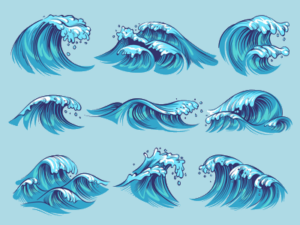 There is obviously a big difference between surfing as a general activity that anyone can do and the professional, competitive version of the sport that we’re looking at here. It’s impossible to talk about the history of one without looking at the other, though, and when it comes to the history of surfing in general it can be traced very far back indeed.
There is obviously a big difference between surfing as a general activity that anyone can do and the professional, competitive version of the sport that we’re looking at here. It’s impossible to talk about the history of one without looking at the other, though, and when it comes to the history of surfing in general it can be traced very far back indeed.
Indeed, the likelihood is that surfing as an activity in some form or another has taken place since man first took to the water and swam in the waves. It’s important to differentiate between that form of bodysurfing and the world of surfing on a board of some description whilst standing up, however.
Surfing in the manner about which we’re talking was invented by the Polynesians. The phrase ‘heʻe ʻana’ roughly translates as ‘they surf’ in Hawaiian. From a Western point of view, it’s likely that Joseph Banks was the first person to record the activity, which he did when he was aboard the HMS Endeavour as part of Captain James Cook’s exploratory force that stoped in Tahiti for a spell.
Surfing was such an important part of the culture of the ancient Polynesians that the chief of any given group was usually the person who was most skilled at riding the waves.
Surfing dictated class in Polynesian culture more than any other activity, with the ruling classes having access to the best beaches and the best wood to make their boards. Those in other classes could gain prestige and climb the social ladder if they were good at surfing. It was such an important part of life in the likes of Samoa and Tahiti that warriors were taught it as part of their training.
It soon became in ingrained part of life in Hawaii, where it was seen as spiritual more than anything else. Oftentimes the surfers would use planks of wood or single canoe hulls as their vessel for taking on the waves.
Surfing’s Wane And Resurgence In Hawaii

The link between surfing and Hawaii is inescapable, with the activity becoming a crucial part of the culture on the islands. It wasn’t until westerners began the process of colonising the lands that the activity began to be suppressed, with the colonisers attempting to turn the locals to Christianity and believing that surfing was a frivolous activity. They also disliked it because it was seen as being an almost religious activity in Hawaii, where heʻe nalu, or wave sliding, sometimes required the prayer of a kahuna, or priest, to deliver good waves for surfing when the oceans were too tame.
This began to change when areas of Hawaii became a tourist destination. Waikiki in particular was popular for Americans to travel to, whereupon they witnessed locals surfing and wanted to give it a go for themselves. One just famous example occurred in 1866 when Mark Twain decided to try it, but he failed. The American novelist and journalist Jack London tried it himself and wrote about it, penning an essay entitled ‘A Royal Sport’ that was published in 1907 and gained attention as a result.
Surfing Begins To Spread
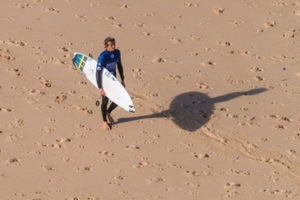 After the turn of the century, surfing as an activity soon began to spread. The Outrigger Canoe and Surfing Club was founded by Alexander Hume Ford in 1908, creating the first modern organisation that had a primary responsibility of spreading surfing to the wider population. They weren’t that keen on spreading the new sport, however, given that it was initially a whites-only enterprise and women weren’t allowed to join the club until 1926.
After the turn of the century, surfing as an activity soon began to spread. The Outrigger Canoe and Surfing Club was founded by Alexander Hume Ford in 1908, creating the first modern organisation that had a primary responsibility of spreading surfing to the wider population. They weren’t that keen on spreading the new sport, however, given that it was initially a whites-only enterprise and women weren’t allowed to join the club until 1926.
Hawaiians started their own club in 1911 that they named Hui Nalu, or Club of the Waves. Yet it wasn’t until the likes of Duke Kahanamoku and George Freeth began to practice the sport that it truly began to spread further afield than Waikiki.
Nothing has done as much for the alteration in Hawaiian culture quite like the spread of surfing to different parts of the globe. The sport’s popularity meant that a cottage industry sprang up in Waikiki for locals to teach others how to surf and to demonstrate the sport on a regular basis.
The Waikiki Beach Boys were locals who did just that, crossing the unspoken social barriers that would normally have meant that they should ‘know their place’ but instead the social norms in the area became fluid. It formed the basis for the modern surfing culture, where anyone who wants to can spend most of their lives living at the beach and surfing. It’s the sport of thing that you can see in the likes of Australia, California and other places where surfing is a key foundation of the local culture.
Modern Surfing Takes Shape
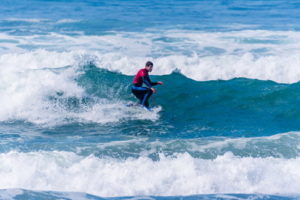 At the start of the 20th century, Hawaiians began to revive surfing as an activity after a period of it having died off. Largely because of developments in real estate in the area and the desire to boost tourism, the locals began to push the notion of surfing as a fun and entertaining activity.
At the start of the 20th century, Hawaiians began to revive surfing as an activity after a period of it having died off. Largely because of developments in real estate in the area and the desire to boost tourism, the locals began to push the notion of surfing as a fun and entertaining activity.
Soon references to it began to spring up in modern culture, such as the release of the film Gidget, which was based on the life of Malibu surfer Kathy Kohner-Zuckerman, as well as the first album by the Beach Boys, which was entitled ‘Surfin’ Safari’.
Surfing culture was suddenly all the rage, though the portrayal of those that lived a surfing life in the media was often one of lazy drop-outs and layabouts. In actuality, surfing culture developed year-on-year. By the 1970s it had become a professional sport in its own right, with Margo Oberg becoming the first female professional surfer in 1975 and sending shockwaves through the sport.
The line between surfing as a sport and the activity as an art form has always been thin, with those that are passionate about it believing that it has always been so much more than just a casual activity and tying themselves to the ancient Polynesian belief that it is a spiritual enterprise.
Professional Surfing
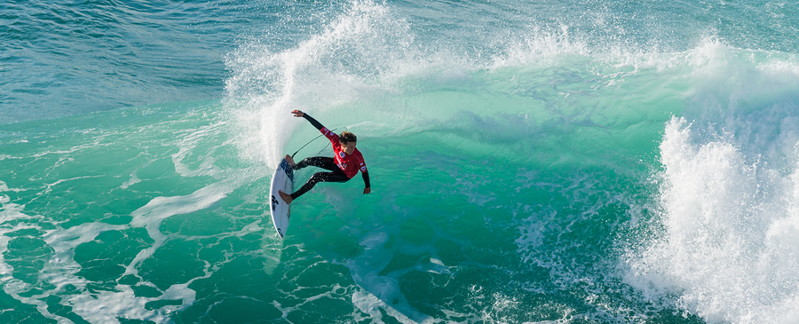 As with other extreme sports, it’s difficult to pin down professional surfing as an exact sport. There are numerous different models for what makes someone ‘professional’ when it comes to surfing. Can it be someone that has gained themselves a sponsorship deal as a surfer, for example? Or can it only be someone who earns money from surfing contests?
As with other extreme sports, it’s difficult to pin down professional surfing as an exact sport. There are numerous different models for what makes someone ‘professional’ when it comes to surfing. Can it be someone that has gained themselves a sponsorship deal as a surfer, for example? Or can it only be someone who earns money from surfing contests?
If it’s just a matter of making money from surfing for something other than teaching it then there’s an argument that it can be dated back as a profession to the West Coast Surfing Championships of 1959. That was the first noted time at which a surfing competition had prize money attached as opposed to being friendly competitions between amateurs.
The formation of the United States Surfing Association in 1961 was also a watershed moment for the sport. It saw the sport change from being simply about riding a good wave to being able to do so with style. Suddenly tricks, turns and the ability to make surfing look good became important facets of the sport. Even then, though, it took until the 1970s for people to be able to genuinely make decent money from surfing.
That grew year-on-year so that by the 1980s surfers could genuinely not only survive but actively make money by doing nothing other than surfing in contests and adding the money from that to money from sponsorship.
Common Judging Criteria
 Different competitions have their own ways of judging the big events, so there is no ‘one size fits all’ approach to the nature of it. Generally judges will look at the following things with the way each surfer takes on every wave that they ride:
Different competitions have their own ways of judging the big events, so there is no ‘one size fits all’ approach to the nature of it. Generally judges will look at the following things with the way each surfer takes on every wave that they ride:
- Their commitment
- The degree of difficultly of what they’re attempting
- How innovative and progressive what they’re trying to do is
- How many manoeuvres they attempt & how different they are from each other
- The speed, flow and power of their surfing
Each event will give its own weighting to the importance of each of these criteria, so a surfer can end up getting more points in one tournament than another when doing exactly the same thing.
Rules
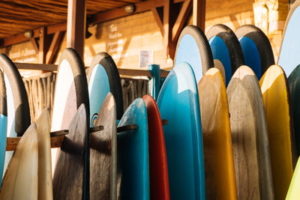 Whilst it might seem like a slightly crazy world, there are certain rules that come into play in the sport of surfing. One of the most important ones is about a surfer’s right of way, wherein a surfer that is closer to the break of water has the right of way over another.
Whilst it might seem like a slightly crazy world, there are certain rules that come into play in the sport of surfing. One of the most important ones is about a surfer’s right of way, wherein a surfer that is closer to the break of water has the right of way over another.
If a surfer has taken possession of a wave then they remain in possession of it until their ride ends. If another surfer joins them on the side then they are referred to as ‘snakes’ and if a judge decides that they’ve interfered with the wave owner then they’ll be scored accordingly.
Surfers often have a maximum number of waves that they can catch within a heat, being guilty of interference if they catch more than their allotted amount.
The Biggest Surfing Competitions and Bodies
| Competition | Information |
|---|---|
| World Qualifying Series | Organised by the World Surf League, this is the main competition that surfers enter when they’re just starting out. Events take place throughout the year and competitors gain points each time they surf |
| World Championship Tour | Competitors that have earned points on the WQS are hoping that they’ll earn enough to make it onto the World Championship Tour, which is also organised by the WSL. The top 10 from the men’s circuit and top 6 from the women’s get to join the WCT, resulting in 34 men and 15 women thanks to wild cards. Again, the aim here is to gain point and be able to remain on the Tour the following year |
| World Surfing Games | This is the responsibility of the International Surfing Association, which organises competitions that don’t offer monetary prizes but medals for the country that the surfers are representing. The Games take place in a different county every year and any country that is part of the ISA can send a team of 3 men and 3 women |
Surfing is a sport that is popular the world over, with numerous governing bodies claiming ownership on it. These bodies all have their own surfing competitions, the most important of which are shown in the table above.
The World Surf League & International Surfing Association
 The governing body for professional surfers is the World Surf League, which was formed in 1976 by Fred Hemmings and Randy Rarick. It wasn’t the first body that attempted to impose some form of rules and order to the world of surfing, coming in the wake of the International Surfing Federation, which existed from 1964 to 1972, and the Smirnoff World Pro-Am Surfing Championships that came into being in 1973 and ceased in 1975.
The governing body for professional surfers is the World Surf League, which was formed in 1976 by Fred Hemmings and Randy Rarick. It wasn’t the first body that attempted to impose some form of rules and order to the world of surfing, coming in the wake of the International Surfing Federation, which existed from 1964 to 1972, and the Smirnoff World Pro-Am Surfing Championships that came into being in 1973 and ceased in 1975.
The ISF didn’t end entirely in 1972, however, and instead became the International Surfing Association, which is recognised by the International Olympic Committee as being the governing body of surfing as a sport. Of all of the ISA’s impressive achievements, nothing is as noteworthy as the fact that in August of 2016 it received confirmation from the IOC that surfing would be included as an event for the 2020 Summer Olympics in Tokyo.
The Association of Surfing Professionals Europe
 Many of the various areas around the world have their own governing body that looks after the rules and regulations for surfing for that continent, with Europe being no exception.
Many of the various areas around the world have their own governing body that looks after the rules and regulations for surfing for that continent, with Europe being no exception.
The Association of Surfing Professionals Europe is a member of the World Surfing League and it is in charge of the organisation of events, including the qualifying tournaments that are associated with them.
